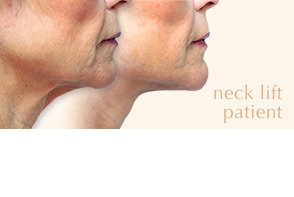How Can I Get the Most Natural Facelift Results? Dr. Conway Answers Your Top 6 Questions

Facelifts are among the most popular plastic surgery procedures, but not every surgeon knows how to deliver natural-looking results. There are also misconceptions regarding what a facelift procedure actually includes, and the answer may surprise you. Asheville-based plastic surgeon Dr. Conway is here to help with answers to your top six facelift questions.
1. What does a facelift procedure actually include?
The word “facelift” is popularly used as a catch-all term for facial rejuvenation, just as the word “Xerox” is used to refer to any sort of photocopy. However, “facelift” has a very specific meaning for plastic surgeons, and knowing this can help you communicate your aesthetic desires more clearly with your doctor.
A surgical facelift is technically called a rhytidectomy (“rye-ti-dek-tuh-mee”). The name may lead you to assume the procedure will treat your entire face, but it is only designed to address sagging skin in the lower two-thirds of the face and the neck. So while you will get a lift through the neck that you might not have expected, a facelift alone won’t address the upper third of your face. If you also have concerns about a sagging brow or drooping eyelids, additional procedures can be included in your facial rejuvenation plan and performed during the same operation.
While it’s good to understand these differences, an experienced board certified plastic surgeon will still know what you mean when you ask for a “facelift” in consultation. Whatever words you use to describe your concerns, expect them to recommend the best plan, whether it’s Botox and filler injections, a full multi-procedure rejuvenation, or something in between.
“A facelift isn’t a tightening procedure but rather a shaping procedure.” – Dr. Conway
The best plastic surgeons will also tailor your facial rejuvenation plan just for you. For example, as part of a facelift, Dr. Conway often performs submental liposuction to reduce the appearance of a “double chin”—a procedure that’s typically billed separately at other practices. This fat reduction accentuates a patient’s chin and their newly-enhanced facial profile, creating more beautiful facelift results.
2. Do I have to go under general anesthesia for my facelift?
Whether or not you have to go under general anesthesia during a facelift depends on the extent of the facelift plan, your health, and a surgeon’s preference. Oftentimes a surgeon can perform a minimal, or “mini,” facelift using IV sedation instead of general anesthesia, but this type of facelift doesn’t provide the same results as a full facelift.
Alternatively, Dr. Conway is able to offer some of his patients a truly comprehensive and full facelift using a local anesthetic combined with an oral sedative. By not having to undergo general anesthesia, patients are able to avoid the anesthesia “hangover.”
However, general anesthesia can’t always be avoided. If multiple surgical procedures are being combined, like a brow lift and a facelift, a responsible plastic surgeon will recommend general anesthesia to ensure you are comfortable throughout your operation. If your plan does require general anesthesia, make sure it will be administered and monitored by a board certified anesthesiologist. This provides a greater level of anesthesia safety and allows your plastic surgeon to devote their full attention to your aesthetic procedure.
3. What procedures can be combined with my facelift?
While a full facelift alone can take decades off your appearance, there are surgical and non-surgical procedures that can significantly enhance your results.
Surgical procedures: To turn back the signs of aging on the top of the face, an eyelid lift and/or a brow lift can be combined with a facelift. These procedures can give you a more awake and refreshed appearance that will match the rest of your rejuvenated face.
Non-surgical procedures: Botox, fillers, and skincare treatments are excellent treatments to complement one’s facelift surgery without increasing downtime. Dermal fillers can be injected in the midface to volumize the cheeks instead of using more-invasive cheek implants, and a laser skin resurfacing treatment or microdermabrasion can enhance a facelift by rejuvenating the skin’s complexion.
4. Will a facelift make my face look “stretched”?
The word “plastic” comes from the Greek word plastikos, which means “to shape.” Dr. Conway approaches all of his facelift surgeries based on the idea that a facelift isn’t a tightening procedure but rather a shaping procedure. This approach leads to exceptionally natural results that portray patients as younger, more refreshed versions of themselves.
Dr. Conway puts it this way: “You have to respect a patient’s anatomy and pull the skin & muscle in the face’s natural direction, or else you will have unnatural-looking results. By doing this, I am able to turn back the clock by restoring—not changing—the shape of the face.”
A good plastic surgeon also considers how the face ages over time. A 50-year-old and a 70-year-old will have quite different skin qualities and require different approaches to deliver a natural-looking result. Additionally, if not well-planned, facelift results that look acceptable now can start looking unnatural over the long haul—which is why it’s important for a surgeon to look at the unique structure of each patient’s face and craft each procedure to age naturally with them.
5. Will people be able to see my facelift scars?
The placement of scars is critical to your final facelift results, and poorly placed scars can be a telltale sign of a facelift. A good plastic surgeon will always try to conceal incisions in undetectable locations that follow a patient’s anatomy, such as above the hairline and behind the tragus (the pointed flap in the front of the ear).
To learn more about scar placement and scar care, read our past blog post on the subject.
6. How can I pick the right plastic surgeon for my facelift?
When considering a plastic surgeon to perform your facelift, it’s important to choose a surgeon who is board certified by the American Board of Plastic Surgery (ABPS). An experienced ABPS surgeon will understand how to produce beautiful and natural facelift results while minimizing your surgery and recovery time. Expect your surgeon to also prioritize your safety by performing your surgery in an accredited surgical suite assisted by a qualified nursing team and certified anesthesia provider.
Get the facelift results you want with Asheville’s Dr. Conway
With over 20 years of experience performing plastic surgery in Asheville, board certified plastic surgeon Dr. Donald Conway understands what it takes to provide amazing facelift results. Contact his practice online or call (828) 210-9333 to learn how he can help restore a more youthful and refreshed version of you, today.



